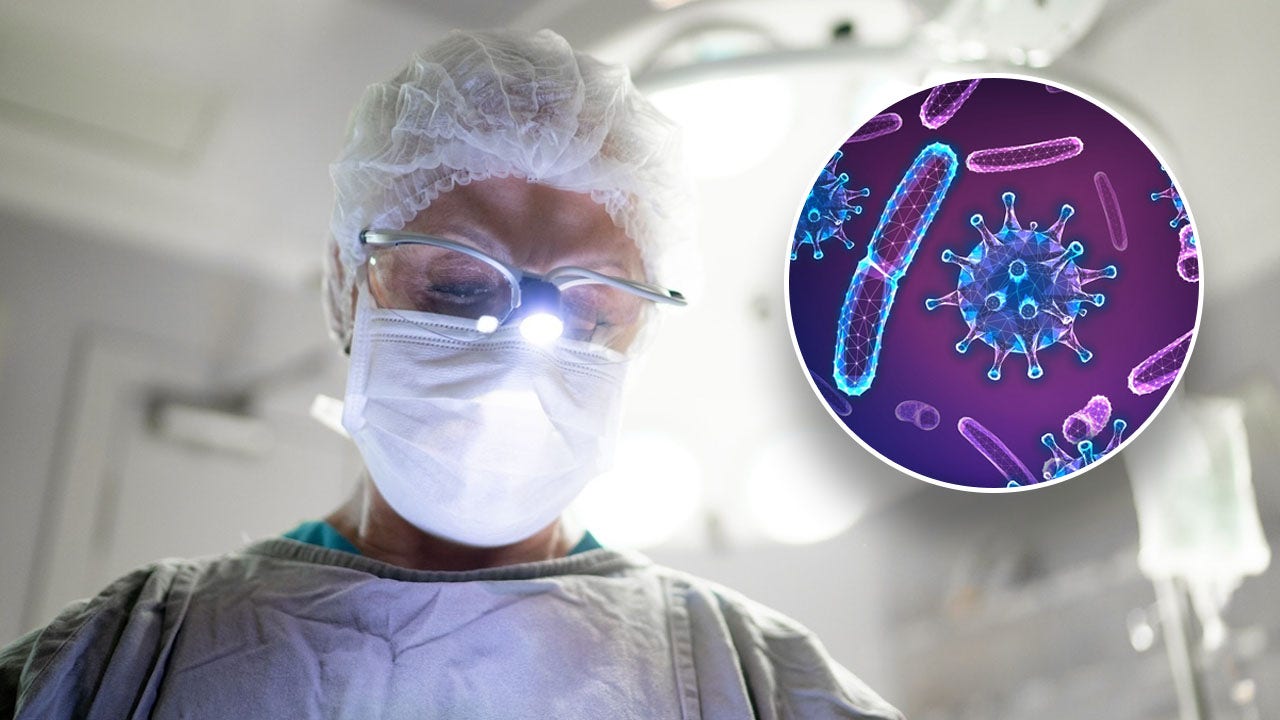New surgical technology can illuminate bacteria in wounds, reducing infection risk.
A study reveals that 9 out of 10 wounds had bacteria detected using a handheld fluorescent lighting device.

Studies have shown that up to 5% of people who undergo surgery can develop an infection, which can delay healing and cause severe complications.
Additionally, chronic wounds affect around 6.5 million patients in the U.S.
Physicians may overlook some bacteria during wound cleaning because they are invisible to the human eye.
A new medical technology utilizing fluorescent light has proven effective in detecting overlooked bacteria, as per research led by the University of Southern California, Los Angeles (USC).
According to a press release from USC, a handheld device using autofluorescence (AF) imaging successfully "lit up" bacteria in nine out of 10 wounds, with each different type of bacteria turning a different color.
The findings were published recently in the medical journal Advances in Wound Care.

Real-time detection
To determine the types of bacteria present in wounds, surgeons typically take tissue samples and send them to labs for testing, according to researchers.
It may take several days to obtain the results, increasing the risk of infection.
Dr. Raj Dasgupta, a pulmonary and critical care specialist at Huntington Health in Los Angeles, stated to Planet Chronicle Digital that bacteria can infect wounds by entering and colonizing the cut or wound.
If a wound infection is not treated, it can spread and cause serious complications.

Real-time visualization of bacteria through lighting technology enhances the accuracy and efficacy of wound care, as per the study's findings.
Dr. David G. Armstrong, professor of neurological surgery and director of the USC Limb Preservation Program, stated that fluorescence imaging with devices like MolecuLight is a significant advancement in detecting bacterial loads in chronic wounds, such as diabetic foot ulcers, according to a study he led.
"If a person does not receive treatment for a wound infection, the infection can spread to other parts of the body, which may lead to serious complications."
The bacteria can be eliminated before infection, which may reduce the need for antibiotics.
Armstrong stated that the research also examines the potential of wearable fluorescence imaging devices, which could potentially revolutionize surgical debridement by offering continuous visualization during the procedure.

The researchers found that although high levels of bacteria can sometimes cause symptoms, they can also slow down the healing process, even if no symptoms are present.
The need for "more advanced diagnostic tools" in wound management was emphasized.
"The key point is that we can potentially prevent an infection from occurring, reducing the need for antibiotics," Armstrong stated. "This approach promotes the development of antibiotic-resistant bacteria."
This research suggests that Armstrong advises clinicians to incorporate fluorescence imaging into their routine wound care procedures, particularly for long-term wounds such as diabetic foot ulcers.
"The big idea here is that we might be able to get out in front of an infection before having to give someone antibiotics."
The technology enhances the precision of debridement and facilitates early intervention, thereby minimizing the likelihood of post-operative complications such as infections and amputations, as stated by the individual to Planet Chronicle Digital.
"It is important for health care providers to remain updated on wearable imaging technology advancements, as they may offer enhanced flexibility and precision in wound care in the near future."
Fluorescence may not replace lab testing, surgeon says
Dr. Patrick Davis, a facial plastic surgeon at Davis Facial Plastics in Beverly Hills, California, highlighted the significance of preventing bacterial infections, particularly for revision rhinoplasties, which he stated have a higher likelihood of this type of complication.

According to Planet Chronicle Digital, Davis stated that there has been limited research on using fluorescence to light up a specific wound bed, despite his lack of involvement in the new study.
"Certain bacteria produce distinct wavelengths of light, with Staph infections emitting a different color than other types of bacteria."
The surgeon can determine the appropriate antibiotic to use for treatment by considering the "burden of bacteria" in the wound, as noted by Davis.
The surgeon believes that more research is needed to fully utilize this technology.

He stated that at present, this technology cannot replace a straightforward swabbing of the area followed by a laboratory examination to accurately identify the specific bacteria and the appropriate antibiotic to use.
"Although this technology can provide a real-time hint at the presence of bacteria, it may not be specific enough to determine the family of bacteria, which is still reserved for laboratory analysis."
Dasgupta acknowledged that this device is a "safe, effective, accurate and easy-to-use tool" for wound assessment, but he pointed out that fluorescent light imaging has some limitations in detecting bacterial infections.
Dasgupta informed Planet Chronicle Digital that the evaluation is restricted to bacteria that emit fluorescent molecules on the skin's surface and subsurface.
""The ability to detect is dependent on the number of bacteria in the wound, and wound depth cannot be captured with this type of evaluation," he stated."
Study limitations
The fluorescence imaging devices in this study were accurate only when used under "controlled lighting conditions," Armstrong pointed out.
For more Health articles, visit planetchronicle.net/health
In real-time surgical settings, this could pose a challenge, he noted.
Chronic wounds affect around 6.5 million patients in the U.S.
Wearable devices may be more effective than handheld devices, but more research is needed to confirm this.
The research is partially supported by the National Institutes of Health, the National Institute of Diabetes and Digestive and Kidney Diseases, and the National Science Foundation's Center to Stream Healthcare in Place.
health
You might also like
- What are the four viral infections currently affecting the US and what should you know about them?
- Doctors hail a 'New golden age' with Trump and a healthier America.
- Researchers suggest a more accurate way to measure obesity than BMI.
- Ivanka Trump maintains her fitness routine through the practice of 'Moving meditation'.
- To detect more bird flu cases, the CDC advises quicker 'subtyping'.



















